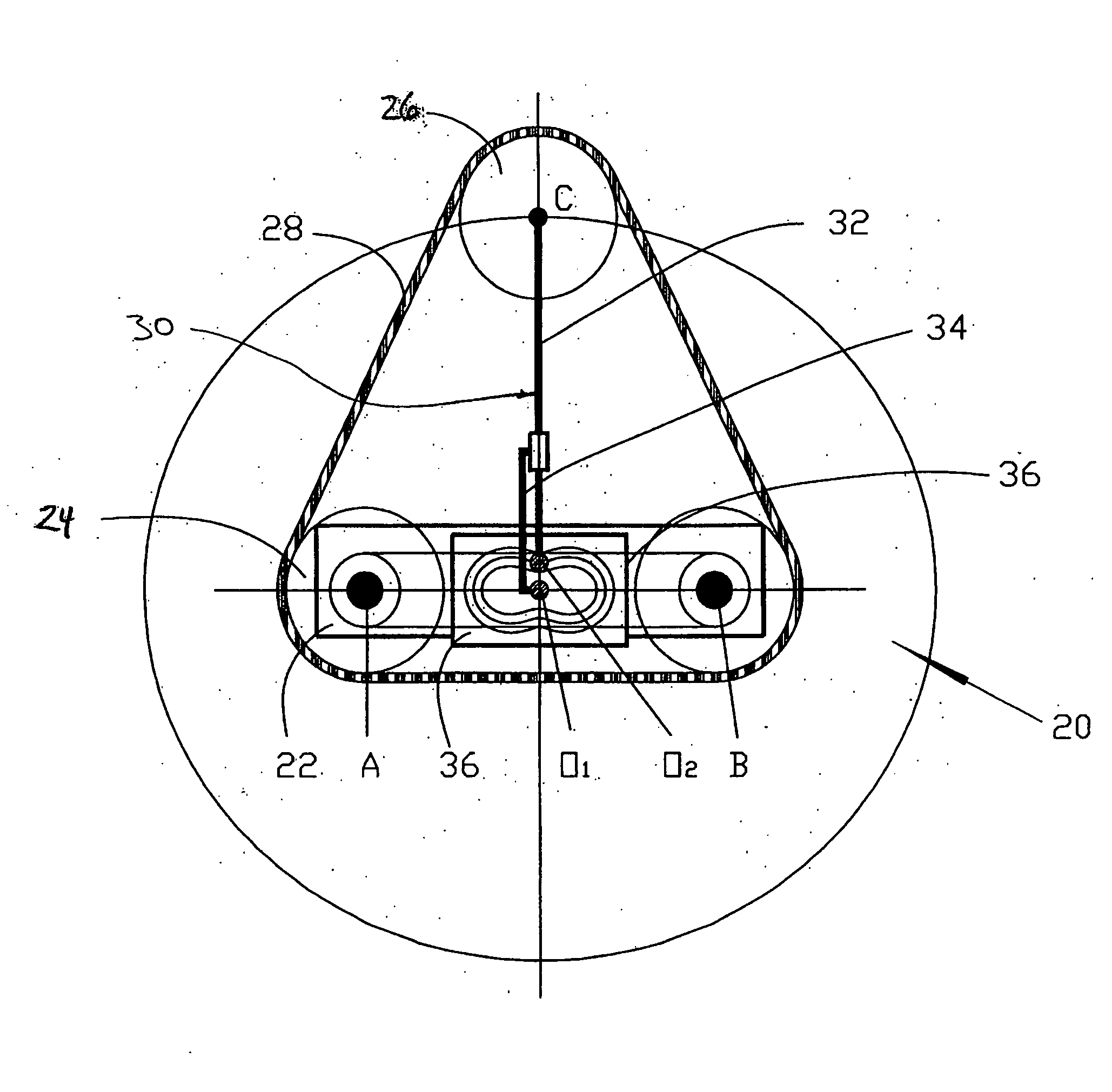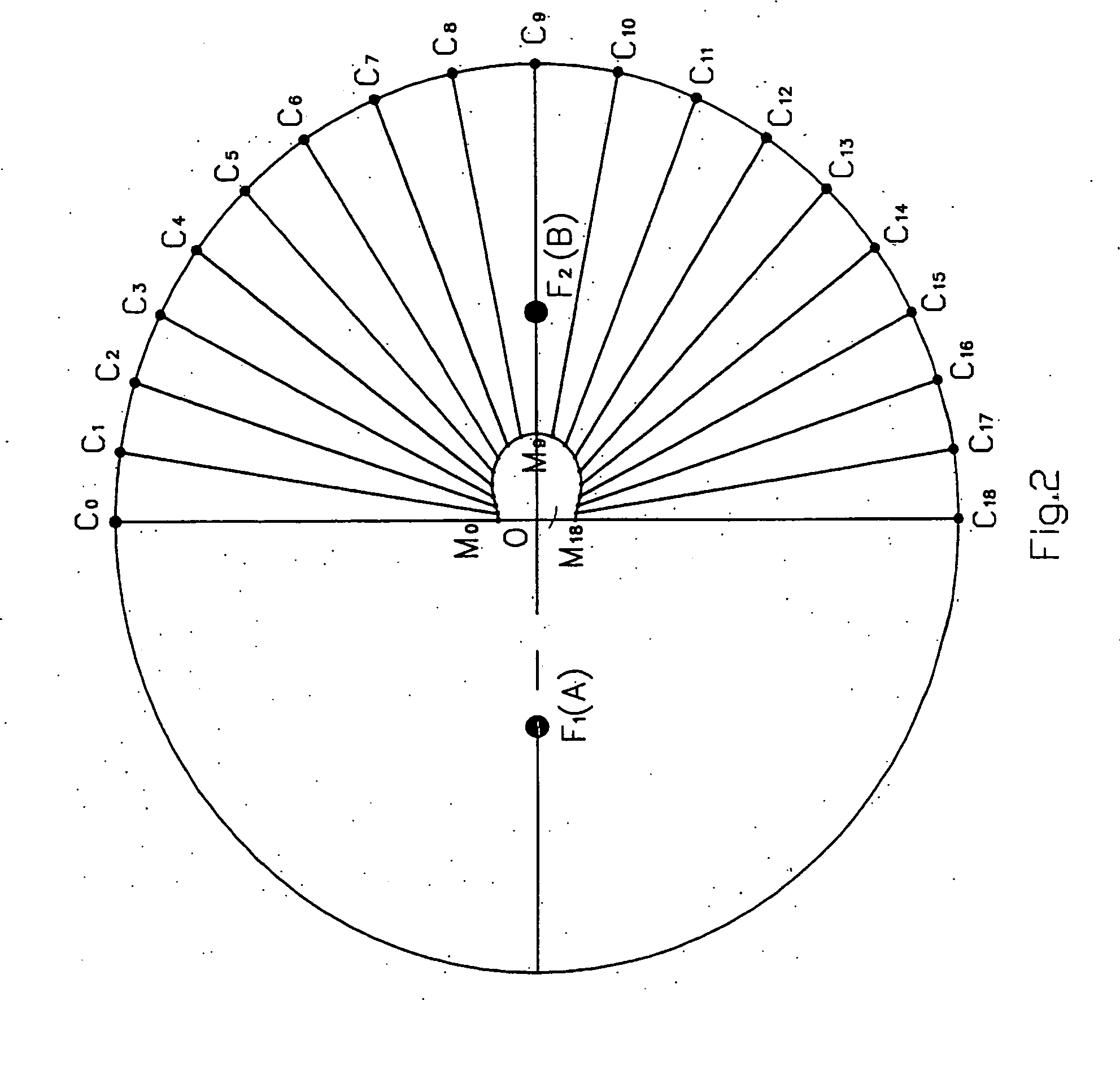Variable configuration articulated tracked vehicle
a track and variable configuration technology, applied in the field of tracked vehicles, can solve the problems of not ensuring an optimal path, inability to ensure continuous tensioning of the track, and inability to ensure a perfect ellipse, etc., and achieves the effect of wide control of the center of gravity, easy maintenance, manufacturing and assembly
- Summary
- Abstract
- Description
- Claims
- Application Information
AI Technical Summary
Benefits of technology
Problems solved by technology
Method used
Image
Examples
Embodiment Construction
[0044] Referring to the schematic diagram of FIG. 1 the variable configuration articulated tracked vehicle or robot of the present invention is shown generally at 20. Vehicle 20 includes a chassis or platform 22 having pairs of wheels 24 at either end thereof, a pair of planetary wheels 26 and tracks 28. The planetary wheels 26 are each attached to the chassis with a planetary wheel arm 30 which consists of a follower 32, a crank 34 and a fixed cam 36.
[0045] The variable configuration of the tracked vehicle 20 is provided by controlling simultaneously the position of a pair of planetary wheels 26 whose location is controlled precisely by a track configuration-controlling mechanism in the form of a planetary wheel arm 30 described in more detail below. The arm 30 may also include a continuously tension control of the tracks which is described in more detail below.
[0046] Referring to FIGS. 1, 2 and 3, the motion trajectory of the center C of the planetary wheel 26 controlled by a pl...
PUM
 Login to View More
Login to View More Abstract
Description
Claims
Application Information
 Login to View More
Login to View More - R&D
- Intellectual Property
- Life Sciences
- Materials
- Tech Scout
- Unparalleled Data Quality
- Higher Quality Content
- 60% Fewer Hallucinations
Browse by: Latest US Patents, China's latest patents, Technical Efficacy Thesaurus, Application Domain, Technology Topic, Popular Technical Reports.
© 2025 PatSnap. All rights reserved.Legal|Privacy policy|Modern Slavery Act Transparency Statement|Sitemap|About US| Contact US: help@patsnap.com



